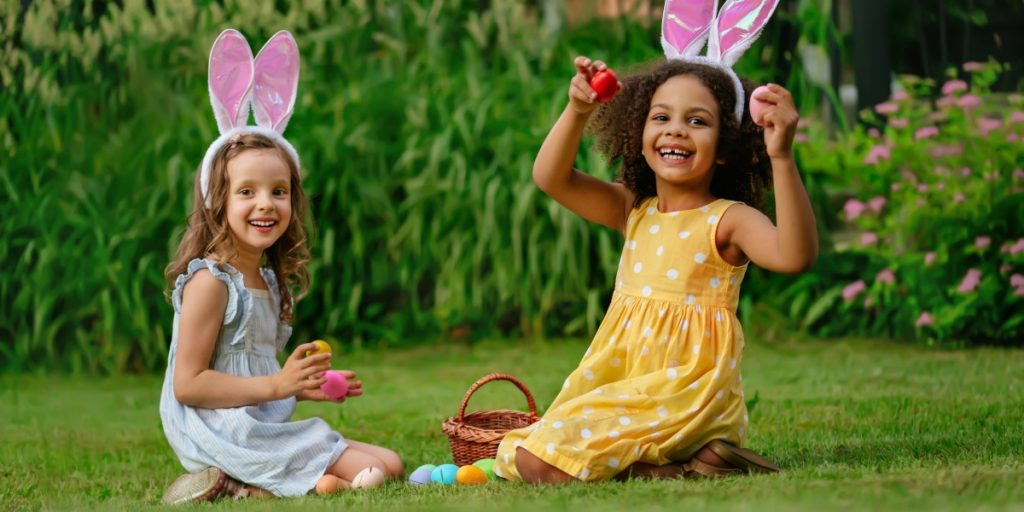From Bermuda’s kite flying to Poland’s water fights, discover eight unique and fun Easter traditions from around the world that go beyond the typical egg hunts and chocolate bunnies.
Others are reading now
Easter is celebrated worldwide, not just with chocolate bunnies and egg hunts, but through a rich tapestry of customs and traditions that highlight its religious significance and cultural diversity.
From kite flying in Bermuda to water fights in Poland, here’s a glimpse into eight fascinating Easter traditions from different corners of the globe.
1. Kite Flying in Bermuda
In Bermuda, Easter is synonymous with kite flying. Locals craft their own kites using wooden sticks and vibrant paper, incorporating “hummers” to produce a buzzing sound characteristic of the holiday. Families and friends gather to fly their kites, especially at Horseshoe Bay Beach during the Good Friday Kite Festival, celebrating with a sky full of color and sound.
2. Norwegian Noir: Påskekrimmen
Norway has a unique tradition of delving into crime stories during Easter. Dubbed Påskekrimmen, it involves indulging in detective novels, crime thrillers, and murder mysteries across various media. The whole country seems to be in on the suspense as publishers, radio and TV stations produce murder mysteries, and even the milk company contributes by printing stories on milk cartons, adding a dash of excitement to the holiday.
Also read
3. Easter Nest Hiding
The hunt for Easter nests is a cherished practice in Germany, Switzerland, and beyond. Not actual nests, these are decorated baskets or boxes filled with chocolates, candies, and toys, believed to be hidden by the Easter bunny himself. It’s up to the children (and adults) to find them, adding excitement and sweetness to the celebration.
4. Water Fighting in Poland
Śmigus Dyngus, or Wet Monday, is how Poland marks Easter Monday with a country-wide water fight. Originating from an old matchmaking tradition, it now sees people of all ages engaging in good-natured battles using water guns, buckets, and any container that can hold water, symbolizing a refreshing start.
5. Eggstravagant Activities
Eggs and Easter are as inseparable as presents and Christmas, making them perhaps the most eggstraordinary holiday food worldwide. People dye and decorate eggs, engage in hunts to find them, race to roll them across the lawn, tap them together to determine the last intact egg (signifying the winner and the receiver of good fortune), or simply enjoy eating them. A prime example is in Haux, France, where approximately 1,000 people feast on a giant Easter omelet prepared with over 4,000 eggs and more than 100 pounds of bacon, garlic, and onions.
6. Clay Pot Throwing
Beware of flying pottery on the Greek island of Corfu. (Spoiler alert: This is unrelated to anyone’s favorite wizard.) Precisely at 11 a.m. on Easter Saturday, Corfu residents toss clay pots of all sizes from their balconies. This custom dates back to the 16th century, originating from people discarding their outdated and unnecessary possessions out the window to prepare for the New Year. The shattering of pots is believed to fend off evil spirits and symbolize a fresh start.
7. Pretzel Sunday in Luxembourg
Luxembourgers celebrate Bretzelsonnden, or Pretzel Sunday, on the third Sunday in Lent. In Luxembourg, pretzels take the form of sweet puff pastries adorned with icing and almonds, making them a treat many wish could be enjoyed every Sunday. According to the Bretzelsonnden tradition, men present the woman they admire with a pretzel on this day. If she accepts, he’s invited to visit her on Easter Sunday and receives an egg in return. During leap years, the tradition flips, allowing women to gift pretzels.
8. Springtime Halloween
Sweden and some of its Scandinavian neighbors celebrate a springtime Halloween: on the Thursday before Easter, children dress up as witches, complete with broomsticks and copper kettles, and go door-to-door asking for candy. In exchange for sweets, they often give adults decorated willow branches or drawings. This tradition stems from the legend that Swedish witches flew to Blåkulla before Easter to revel with the devil. To ensure these witches do not return, Swedes light large bonfires on Easter Sunday.

